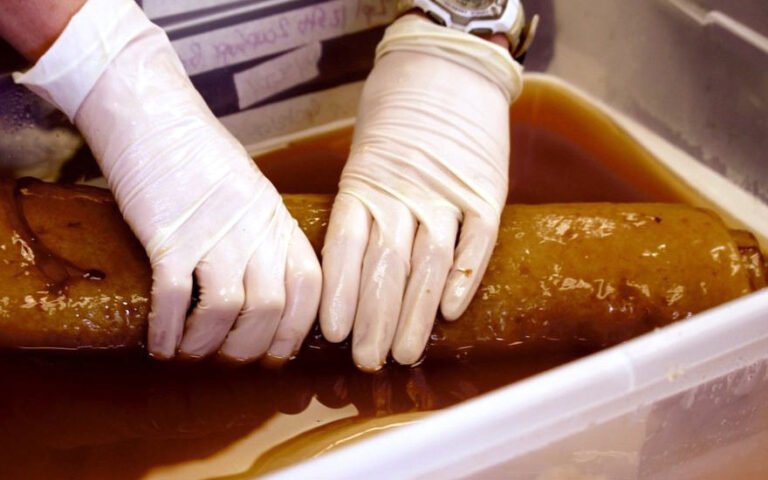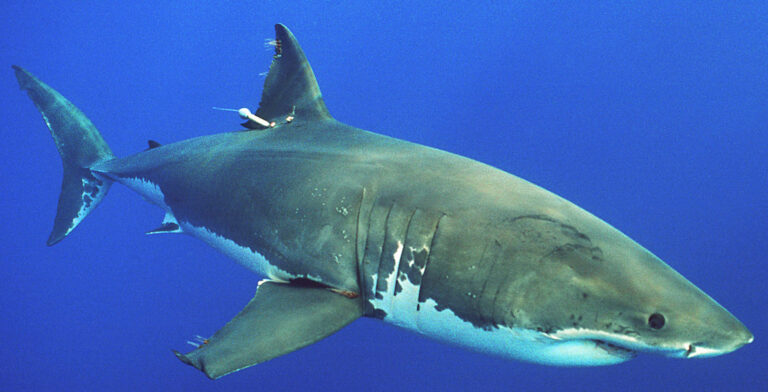It is with great sadness that we report the devastating news of the death of the last known freshwater Irrawaddy dolphin in northeastern Cambodia. This heartbreaking event marks the extinction of the species in Laos, highlighting the urgent need for conservation efforts to protect these magnificent creatures. In this article, we will delve into the background of the Irrawaddy dolphin, explore the causes of its decline, discuss the current status in Cambodia, and emphasize the importance of learning from this loss in order to protect other endangered species in the region.
Background
The Irrawaddy dolphin (Orcaella brevirostris) is a unique species found in the coastal areas and rivers of Southeast Asia, particularly the Mekong River. Known for its distinctive appearance, which includes a rounded head and a short beak, the Irrawaddy dolphin is a critically endangered species, with only a few hundred individuals remaining worldwide.
For centuries, these dolphins have coexisted with local communities, and their cultural and ecological significance cannot be overstated. Unfortunately, due to a variety of factors, their population has experienced a sharp decline, pushing them closer to the brink of extinction.
The Last Known Freshwater Irrawaddy Dolphin
With the recent death of the last known freshwater Irrawaddy dolphin in northeastern Cambodia, the extinction of the species in Laos has become a stark reality. This individual was a symbol of hope, as it was the last remaining representative of this subspecies in Cambodia. Its death serves as a heartbreaking reminder of the urgency of conservation efforts.
This particular dolphin was an important ambassador for raising awareness about the challenges faced by the species. Its loss not only affects the ecosystem but also the local communities who relied on it for tourism. It is a considerable blow to both biodiversity and eco-tourism efforts in the region.
Extinction of the Species in Laos
The extinction of the species in Laos is a significant loss for the country and the region as a whole. The freshwater Irrawaddy dolphins once thrived in the Mekong River, which flows through Laos, but their numbers have dwindled over the years. Now, with the death of the last known individual in Cambodia, the chances of their natural recovery in Laos are slim.
One of the main factors contributing to the extinction of this species in Laos is anthropogenic activities. Human encroachment on their habitat, pollution, and the use of destructive fishing practices have all played a role in their decline. These dolphins have also been victims of accidental bycatch, becoming entangled in fishing gear and drowning.
Causes of Decline
The decline of the Irrawaddy dolphin population can be attributed to a combination of factors, all of which have had detrimental effects on their survival and reproduction rates. The following are some of the main causes:
Anthropogenic Activities
Human activities such as unsustainable fishing practices, dam construction, and deforestation have had a profound impact on the habitat of these dolphins. Rapid development in the region, driven by economic growth, has often taken precedence over conservation efforts, leading to the destruction of crucial ecosystems. This destruction directly affects the dolphins' ability to access their preferred feeding grounds and reproductive areas.
Furthermore, the increased presence of boats, both for transportation and fishing, has disturbed the delicate balance of the dolphins' environment. Excessive noise and water pollution from these vessels can disrupt their communication and prey availability, further exacerbating their decline.
Altered Water Flow in the Mekong River
The construction of dams and water diversions along the Mekong River has significantly altered its natural flow patterns. These changes in water flow disrupt the dolphins' ability to navigate and find food, leading to a decline in their overall health and reproductive success. The reduction in water volume can also make the river shallower, making it harder for dolphins to swim and hunt effectively.
Additionally, these alterations to the river's flow affect the migration patterns of important prey species of the Irrawaddy dolphin, further reducing their food supply. As a result, the dolphins are forced to travel longer distances in search of food, increasing their vulnerability to threats such as accidental entanglement in fishing gear.
Climate Change
Climate change is another significant factor contributing to the decline of the Irrawaddy dolphin population. Rising temperatures and changes in weather patterns can alter the availability and distribution of prey species, affecting the dolphins' ability to find sufficient food. Additionally, the increasing frequency and intensity of extreme weather events, such as storms and floods, can destroy the dolphins' habitats and disrupt their breeding and feeding activities.
Harmful Fishing Practices
Harmful fishing practices, such as the use of cheap nylon nets, have posed a significant threat to the survival of the Irrawaddy dolphins. These dolphins often get entangled in these nets, leading to drowning and death. The widespread use of such fishing methods, driven by economic pressures and lack of awareness about their impact, has contributed to the decline of the species.
Implementing sustainable fishing practices and promoting community-based conservation efforts can help mitigate the harmful effects of fishing on the dolphins' population. Education and awareness campaigns are also vital in ensuring the long-term survival of these creatures.
The Current Status in Cambodia
Although the extinction of the species in Laos is a devastating blow, there is still a glimmer of hope for the Irrawaddy dolphins in Cambodia. The remaining population in Cambodia's stretch of the Mekong River is relatively stable, thanks to conservation efforts and the establishment of protected areas.
The Cambodian government has implemented various measures to protect the dolphins, including the establishment of dolphin conservation zones and the enforcement of fishing regulations. These efforts have helped create safe havens for the dolphins to thrive and have resulted in a slight increase in their numbers in recent years.
The local communities living along the river have also played a crucial role in the conservation efforts. Engaging with these communities, raising awareness about the importance of protecting the dolphins, and involving them in sustainable fishing practices have all contributed to the success of conservation initiatives.
However, despite these promising developments, the Irrawaddy dolphins in Cambodia still face numerous challenges that must be addressed to ensure their long-term survival and recovery.
Future Challenges
The future survival of the Irrawaddy dolphins in Cambodia and other parts of Southeast Asia depends on addressing several pressing challenges. These challenges include:
Continued Anthropogenic Activities
The pressures of population growth, industrialization, and economic development in the region continue to exert a significant toll on the dolphins' habitat. Encroachment on riverbanks, pollution from urban areas and industries, and unsustainable fishing practices all pose ongoing threats to the survival of the dolphins. Stricter enforcement of regulations, promoting sustainable development practices, and raising awareness among the public are crucial steps towards mitigating these challenges.
Expanding Dam Construction
The construction of dams in the Mekong River and its tributaries is a major concern for the survival of the Irrawaddy dolphins. These dams disrupt the natural flow of the river, fragmenting habitats and altering water quality. The creation of reservoirs also poses additional risks to the dolphins, as these areas may become hunting grounds for illegal fishing activities. Balancing the need for clean energy with the conservation of endangered species is a complex challenge that requires collaboration between governments, stakeholders, and environmental organizations.
Climate Change Impacts
The effects of climate change are expected to intensify in the coming years, posing further challenges for the survival of the Irrawaddy dolphins. Rising sea levels, increased water temperatures, and changes in precipitation patterns can impact their food sources, reproductive cycles, and overall health. Implementing climate adaptation strategies and reducing greenhouse gas emissions are vital steps towards protecting these vulnerable species.
Illegal Fishing
Illegal fishing practices, such as the use of banned gear and the capture of protected species, continue to pose a significant threat to the dolphins' population. Strengthening law enforcement efforts, improving fisheries management systems, and promoting alternative livelihoods for communities dependent on fishing are important measures for combating illegal fishing and ensuring the welfare of the Irrawaddy dolphins.
The Importance of Learning from this Loss
The death of the last known freshwater Irrawaddy dolphin in northeastern Cambodia should serve as a wake-up call for all of us. It is a stark reminder of the detrimental impact that human activities and climate change can have on our environment and precious wildlife.
This loss should inspire us to reevaluate our relationship with nature and prioritize conservation efforts. We must learn from this devastating event and take action to protect other endangered species in the region. By implementing sustainable practices, raising awareness, and supporting conservation initiatives, we can ensure a brighter future for both wildlife and local communities.
Conclusion
The extinction of the freshwater Irrawaddy dolphin in Laos is a tragic loss for the region. The death of the last known individual in northeastern Cambodia serves as a stark reminder of the urgent need for conservation efforts to protect these incredible species. The decline of the Irrawaddy dolphin population can be attributed to anthropogenic activities, altered water flow in the Mekong River, climate change, and harmful fishing practices. While the current population in Cambodia's stretch of the Mekong River is relatively stable, future challenges such as continued anthropogenic activities, expanding dam construction, climate change impacts, and illegal fishing must be addressed. Learning from this loss is crucial in order to protect other endangered species and ensure a sustainable future for our planet.


